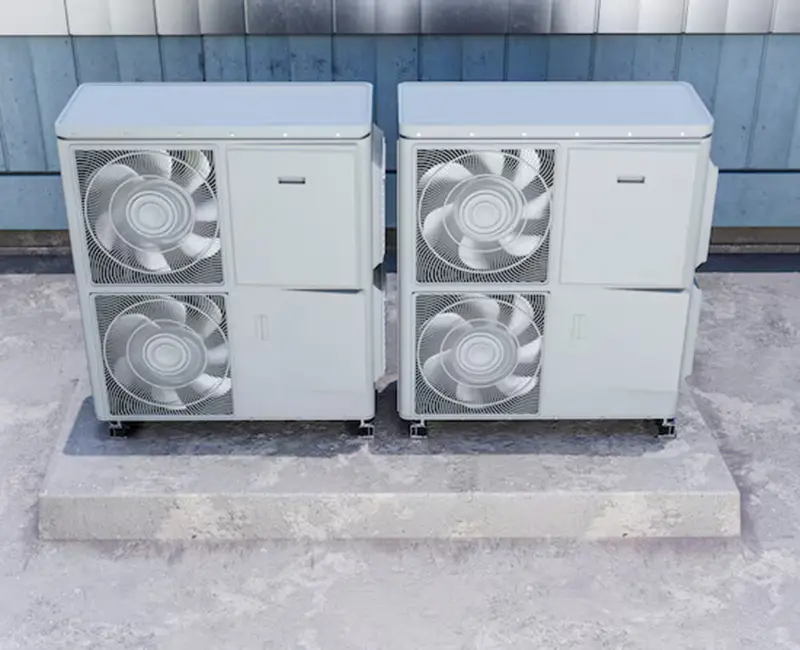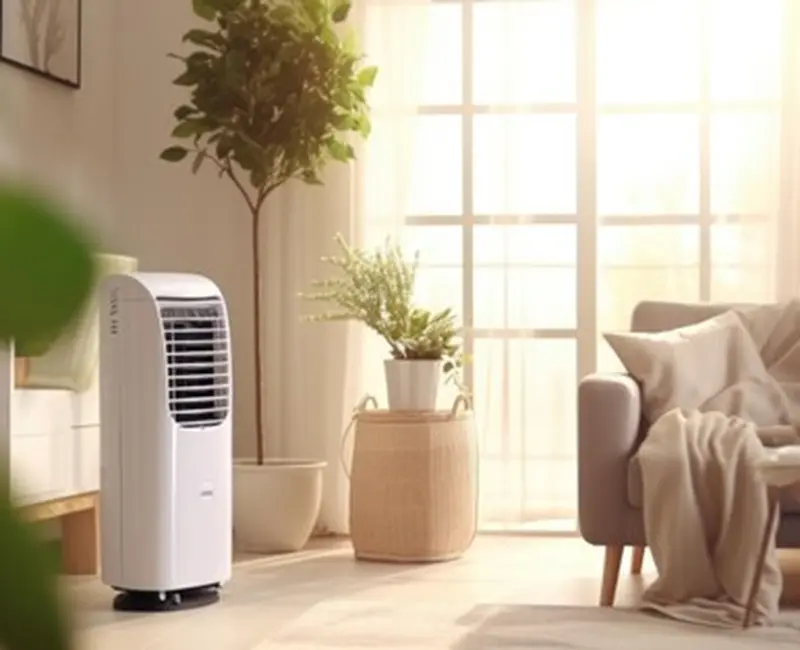Foldable Heat Exchangers: Core Technology for Portable Cooling Devices

Foldable heat exchangers redefine portable cooling with their groundbreaking design. I’ve seen their compactness and efficiency enhance cooling devices like wearable gadgets and portable air conditioners. Their innovative baffle system boosts heat transfer coefficients by up to 9.7%, making them indispensable for modern cooling needs. Integration with the Copper Fin Heat Exchanger further amplifies their performance.
Key Takeaways
- Foldable heat exchangers are small and light, perfect for portable coolers and wearable gadgets.
- Using copper fins boosts heat flow, making them work better in tough conditions.
- Their smart design lets them bend into different shapes, working well in tight spaces.
What Are Foldable Heat Exchangers?

Definition and Unique Design
Foldable heat exchangers represent a leap forward in thermal management technology. I see them as compact, lightweight systems designed to transfer heat efficiently while maintaining a foldable structure. This unique design allows them to adapt to various shapes and spaces, making them ideal for portable cooling devices. Unlike traditional rigid heat exchangers, these foldable versions use flexible materials and advanced engineering to ensure durability and performance under dynamic conditions.
One of the most striking features of foldable heat exchangers is their ability to optimize heat transfer without compromising portability. Their innovative baffle systems enhance heat transfer coefficients significantly, as demonstrated by real-world applications. For instance, the University of Vermont Medical Center achieved notable energy savings by optimizing their heat exchanger systems, highlighting the potential of such technologies in improving efficiency. Similarly, the Metropolitan Hospital Center restored system performance by addressing issues with heat exchanger bundles, further proving the reliability of advanced heat exchanger designs.
Copper Fin Heat Exchanger Integration
The integration of copper fin heat exchangers into foldable systems elevates their performance to new heights. Copper, with its thermal conductivity of approximately 231 BTU/(hr·ft⋅°F), outperforms materials like aluminum, which has a thermal conductivity of about 136 BTU/(hr·ft⋅°F). This significant difference makes copper an excellent choice for enhancing heat transfer in portable devices. I’ve observed that this integration not only improves cooling efficiency but also ensures consistent performance in demanding environments.
The role of copper fin heat exchangers becomes even more evident when examining their technical advantages. A study comparing copper, aluminum, and graphite foam heat sinks revealed that copper consistently delivers superior thermal performance. Additionally, advancements in copper fin designs, such as optimized tube geometries and new fin configurations, have further improved energy efficiency and heat transfer capabilities. These innovations make copper fin heat exchangers indispensable in applications requiring high thermal conductivity and durability.
| Aspect | Details |
|---|---|
| Thermal Conductivity | Copper has superior thermal conductivity compared to other materials, enhancing heat transfer. |
| Design Advancements | Innovations in design and manufacturing techniques have improved thermal performance and corrosion resistance. |
| Application Range | Suitable for harsh environments, including petrochemical processing and high-temperature operations. |
| Efficiency Improvements | New fin configurations and optimized tube geometries enhance energy efficiency and heat transfer. |
| Material Innovations | Development of new copper alloys increases strength and thermal conductivity, broadening application scope. |
By combining the flexibility of foldable heat exchangers with the efficiency of copper fin technology, manufacturers like Ningbo Senjun New Materials Co., Ltd. are setting new benchmarks in portable cooling solutions. Senjun specializes in producing copper aluminum fin heat exchangers for a wide range of applications, including refrigerators, freezers, and medical ultra-low temperature refrigerators. Their expertise ensures that these systems deliver unmatched performance and reliability.
How Do Foldable Heat Exchangers Work?
Mechanism and Engineering Principles
Foldable heat exchangers operate on advanced thermal management principles. I’ve observed that their design combines flexibility with high thermal efficiency, making them ideal for portable cooling devices. These systems rely on the fundamental concept of heat transfer, where heat moves from a hotter surface to a cooler one. By incorporating innovative materials and structures, foldable heat exchangers maximize this process while maintaining a compact and adaptable form.
The engineering principles behind these devices are fascinating. For instance, they use baffles and fins to increase the surface area for heat exchange, enhancing thermal performance. I’ve seen experimental setups that validate these principles. The following table highlights some key findings from thermal property characterization studies:
| Figure | Description |
|---|---|
| 5 | Experimental set-up used for the characterization of thermal properties, featuring RTD sensors for temperature logging. |
| 6 | Comparison of experimental and simulated temperature values over time, showing controlled heating plate temperature and external surface temperatures. |
| 10 | Average temperature in the folding flap area over time, comparing thermal camera images with numerical model computations. |
These measurements demonstrate how foldable heat exchangers maintain consistent performance even under dynamic conditions. By integrating technologies like the Copper Fin Heat Exchanger, these systems achieve superior heat transfer rates. The copper fins enhance thermal conductivity, ensuring efficient cooling in compact devices.
Flexible Ultra-Thin Heat Pipe Technology
One of the most remarkable features of foldable heat exchangers is their use of flexible ultra-thin heat pipe technology. I’ve found that these heat pipes enable efficient heat transfer in devices with complex shapes, such as wearable cooling systems. Their ability to transfer heat out-of-plane makes them indispensable for modern portable cooling solutions.
Several technical advancements make this technology highly effective:
- Flexible heat pipes allow bending without compromising thermal conductivity, thanks to corrugated tube casings.
- Composite films enhance the flexibility of flat heat pipes, although they may slightly reduce heat transfer efficiency.
- Phase-change flexible filaments achieve exceptional thermal conductivity (up to 6750 W/m·K) while maintaining deformation flexibility, making them ideal for spatial thermal management.
The efficiency of these components is supported by decades of empirical data. The table below summarizes key performance attributes:
| Evidence Description | Supporting Detail |
|---|---|
| High thermal conductivity | Heat pipes have a conductivity of 10X – 200X that of solid thermally conductive materials like copper, aluminum, and graphite. |
| Design flexibility and orientation versatility | The wicking structure allows heat pipes to operate in any orientation, including against gravity. |
| Lightweight nature and reliability | Heat pipe technology has no moving parts, making them silent, efficient, and extremely reliable. |
| Decades of empirical testing and modeling | Boyd has compiled decades of empirical testing data that has enabled the development of proprietary modeling software, SmartCFD. |
| Application in compact systems | Heat pipes can be embedded in other technologies for faster heat spreading or utilized within a system to transport heat. |
These innovations ensure that foldable heat exchangers deliver unmatched performance in portable cooling devices. Companies like Ningbo Senjun New Materials Co., Ltd. are at the forefront of this technology. By leveraging their expertise in producing copper aluminum fin heat exchangers, they contribute to the development of efficient and reliable cooling solutions.
Benefits and Applications of Foldable Heat Exchangers
Compactness and Portability
Foldable heat exchangers redefine compactness and portability in cooling technology. I’ve seen how their innovative designs, such as riblet-mounted dimples with a 60° riblet angle, enhance thermo-aerodynamic performance while reducing pressure loss. These features make them ideal for applications where space is limited. For instance, microchannel heat exchangers achieve a 20-30% reduction in volume and weight compared to traditional compact plate-fin designs. This reduction highlights their adaptability in industries like aerospace, where every gram matters.
Dimensional analysis further supports their compactness. The heat duty parameter ensures efficient thermal management in smaller spaces, while pressure drop curves optimize performance for both hot and cold streams. These advancements allow foldable heat exchangers to deliver competitive heat transfer capacity without compromising portability.
Energy Efficiency and Performance
Energy efficiency is a cornerstone of foldable heat exchanger technology. I’ve observed how their advanced designs minimize energy consumption while maximizing thermal performance. Metrics like U-Value and SHGC validate their efficiency. Lower U-Values reduce heat loss, making these exchangers indispensable in colder climates. Similarly, lower SHGC values limit solar heat gain, ensuring consistent cooling in warmer environments.
Prototype testing results further emphasize their performance. A study revealed that foldable heat exchangers improve heat transfer efficiency by up to 77.3%, as indicated by Nusselt number increases. This efficiency, combined with their lightweight nature, makes them suitable for portable cooling devices. The integration of Copper Fin Heat Exchanger technology enhances their thermal conductivity, ensuring reliable performance in demanding conditions.
Applications in Wearable Cooling Devices and Portable Air Conditioners
Foldable heat exchangers are revolutionizing wearable cooling devices and portable air conditioners. I’ve seen their flexible ultra-thin heat pipe technology enable efficient cooling in compact systems. These heat pipes transfer heat out-of-plane, making them ideal for wearable devices that require adaptability to complex shapes.
Portable air conditioners benefit from their lightweight and compact design. For example, Boeing’s air-nitrogen heat exchanger exceeded weight reduction requirements by 10%, while Airbus achieved 50% higher heat transfer per weight. These advancements ensure that portable cooling devices deliver consistent performance without sacrificing portability. Manufacturers like Ningbo Senjun New Materials Co., Ltd. leverage Copper Fin Heat Exchanger technology to produce reliable solutions for refrigerators, freezers, and medical ultra-low temperature refrigerators, further demonstrating the versatility of foldable heat exchangers.
Challenges and Future Potential
Current Limitations and Scalability
Foldable heat exchangers have revolutionized cooling technology, but scaling their production presents unique challenges. I’ve noticed that while traditional manufacturing methods dominate the market, emerging technologies like 3-D printing are gaining traction. However, they face hurdles in cost-effectiveness and scalability.
- 3-D printing struggles to compete with conventional methods on price.
- Scaling up this technology for larger heat exchangers remains a significant obstacle.
- Modularization offers a promising solution, allowing smaller units to combine into larger systems.
- Advances in metal 3-D printing aim to enhance production complexity and efficiency.
- Active investment in startups and research institutions highlights the industry's commitment to overcoming these barriers.
These challenges underscore the need for innovative approaches to make foldable heat exchangers more accessible and scalable.
Innovations in Thermoelectric Cooling Systems
Thermoelectric cooling systems are reshaping the landscape of portable cooling. I’ve observed how these systems leverage the Peltier effect to transfer heat efficiently without moving parts. This innovation aligns perfectly with foldable heat exchangers, enhancing their energy efficiency and reliability. Recent breakthroughs in thermoelectric materials, such as bismuth telluride alloys, have significantly improved cooling performance. These advancements pave the way for integrating thermoelectric modules into foldable designs, creating compact and highly efficient cooling solutions.
Role in Shaping the Future of Cooling Technology
Foldable heat exchangers are poised to redefine cooling technology across industries. Their adaptability makes them ideal for applications ranging from wearable devices to aerospace systems. I believe their integration with cutting-edge technologies, like thermoelectric cooling and copper fin heat exchangers, will set new benchmarks for efficiency and portability. Companies like Ningbo Senjun New Materials Co., Ltd. are leading this transformation, ensuring that these innovations meet the demands of modern cooling challenges.
Foldable heat exchangers redefine portable cooling technology. Their integration with copper fin heat exchangers and flexible heat pipes ensures unmatched efficiency and adaptability.
I believe these innovations will revolutionize cooling solutions across industries. Their compact design and advanced engineering principles make them indispensable for wearable devices and portable air conditioners.
FAQ
What makes foldable heat exchangers unique compared to traditional ones?
Foldable heat exchangers adapt to various shapes and spaces. Their lightweight, compact design and advanced thermal management make them ideal for portable cooling devices.
How does copper fin technology enhance foldable heat exchangers?
Copper fin technology improves thermal conductivity and heat transfer efficiency. Its durability ensures reliable performance, even in demanding environments like wearable cooling systems.
Where can I find high-quality foldable heat exchangers?
I recommend Ningbo Senjun New Materials Co., Ltd. They specialize in copper aluminum fin heat exchangers for refrigerators, freezers, and medical cooling systems.
Tip: Always choose a manufacturer with expertise in advanced thermal solutions for optimal performance.


















